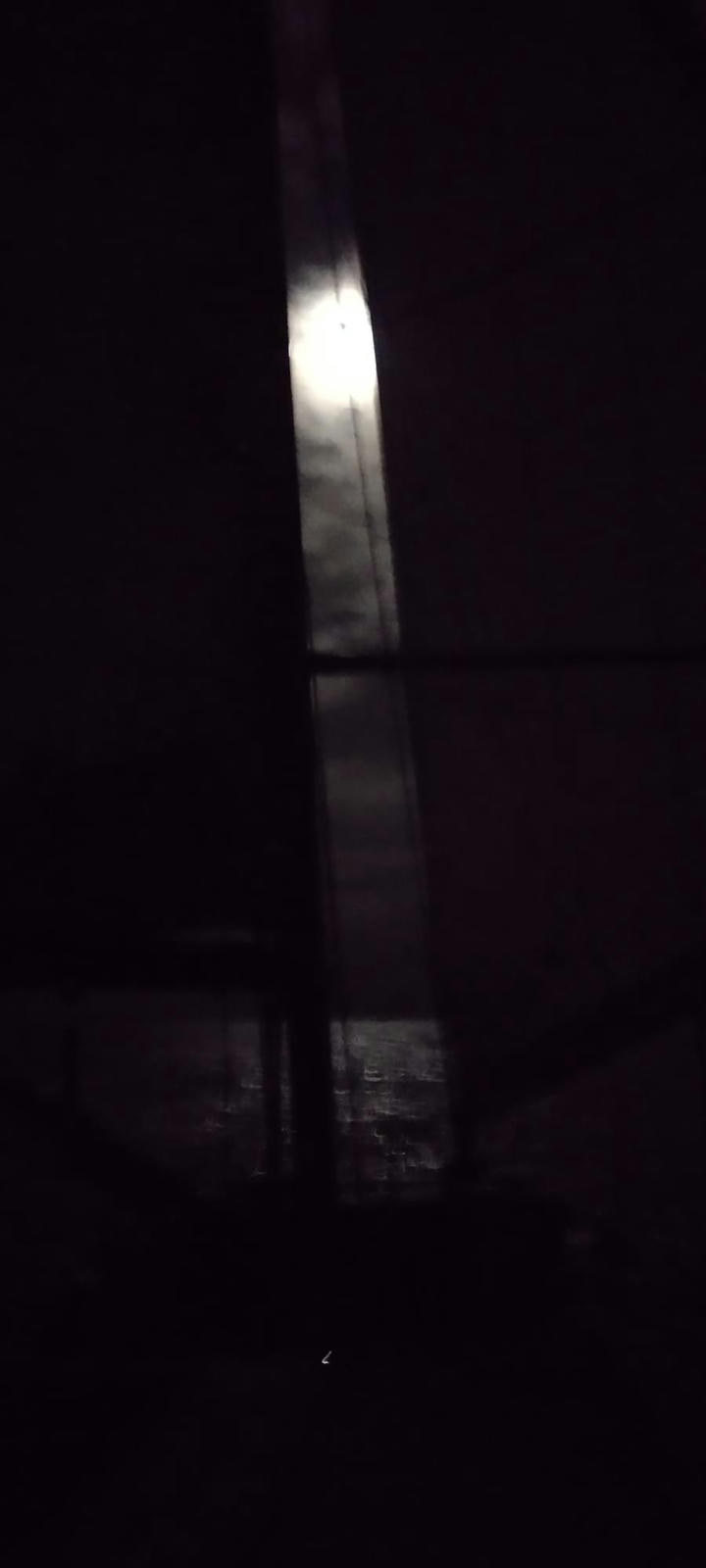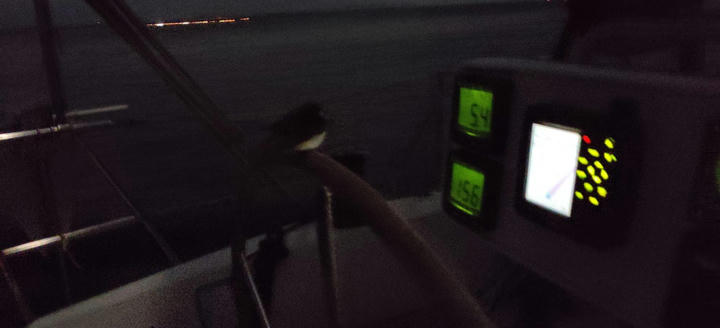After a resting for the rest of the day in Bahia Arenas, preparing food for the upcoming passage to the Golfo de Panama, we decided to spend the night in Bahia Arenas and leave at dawn. Later in the afternoon, as the rain came in pouring (it appears that in this side of the Golfo de Chiriqui, it is still wet season!), a fisherman panga came in to take shelter for the night. They anchored not very far from us after dropping a net at the entrance of the bay and waving friendly hellos as they approached. On the following morning, we didn't manage to beat them out of the anchorage - they just wake up and go at first lights - but we followed them closely, motoring out and South with the rising sun in confused swell. We were going for Punta Mala, one of the difficult landmarks along the way, a point with strong currents and possibly strong gap winds that can blow from the Atlantic up to 50 knots based on the same isthmus phenomenon as Tehuantepec. In the forecast, those weren't building up until later in the week so we should be fine. We would be able to stop along the Point in the Bay of Barnao and pass Mala if we didn't linger in the appealing little surf town for too long.
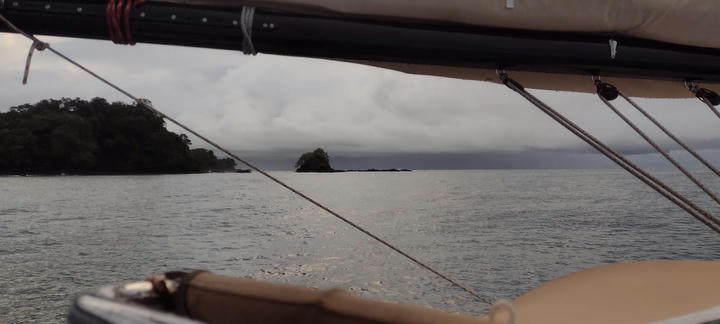
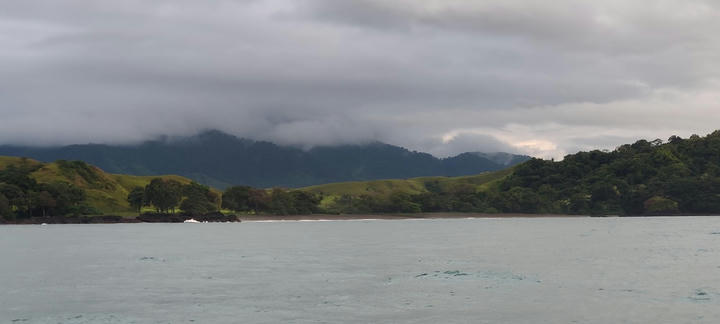
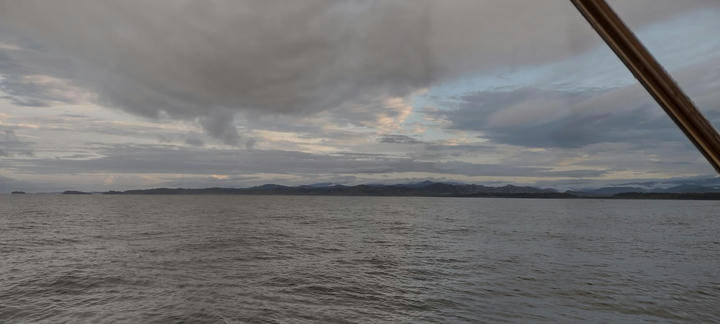
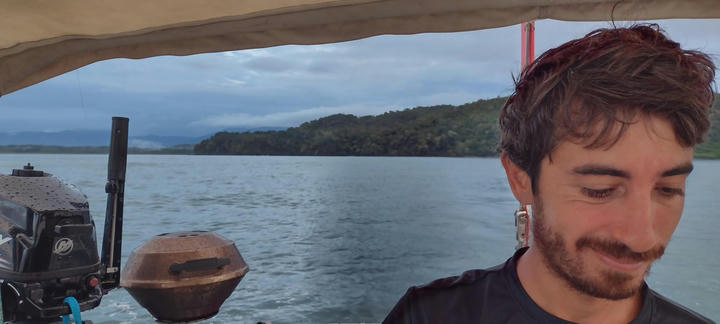
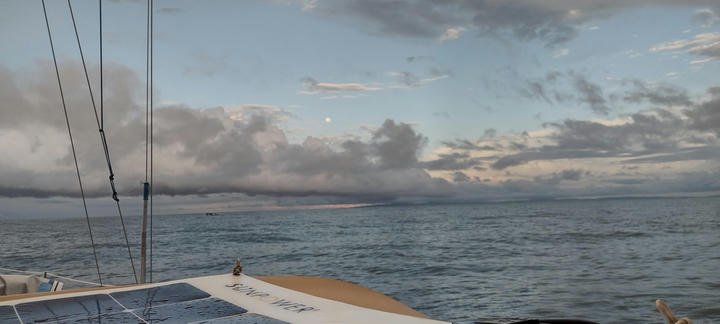
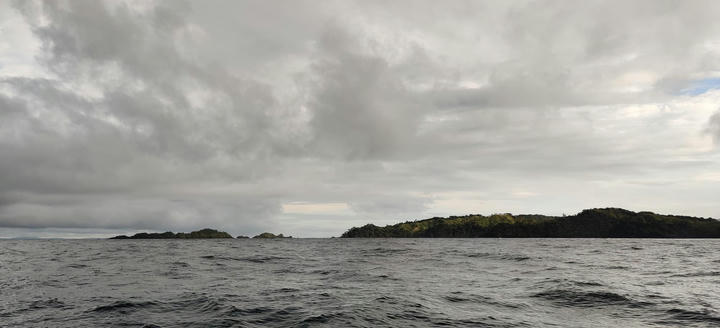
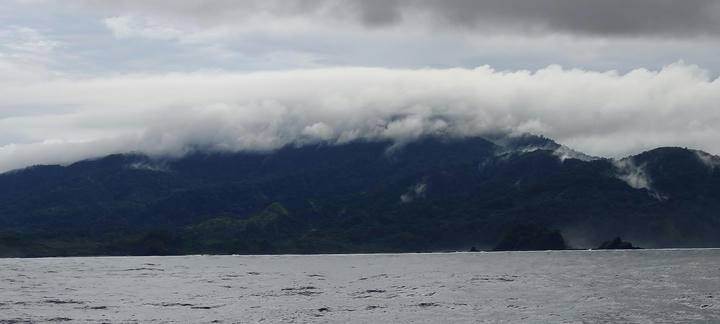

Yalçın took the first shift hand-steering under engine power as I tried to finish my light night. When we finally turned towards the East after exiting the Bay of Chiriqui for good, the seas became better behaved and the gray sky opened up a little. By 10 or so, we were able to sail the downwind breeze and give a break to Monsieur Engine and ourselves. The breeze didn't establish steadily before later in the afternoon, so we motored on and off, alternating between rest, eating the rice salad we had prepared for underway and steering when necessary. We were making good progress. By 3, we decided to sail this good wind and skip Benao altogether. We set a new waypoint past it on the chart plotter and poled the jib to go wing on wing. The conditions were beautiful for sailing, the seas were calm and following, the sky opened up even more and the view of the land was pretty. We were quietly sailing at the Southernmost point of our trip, in the 7 degree latitude, before heading up North again for Punta Mala and to reach Panama City in the Northern part of the Golf of Panama, the next bay. It was a milestone: We had been numbering our legs on the logbook by categories and almost this entire trip (except the detour we made in the Sea of Cortez) was labelled South, a total of 56 legs from Berkeley! Now I guess we would have to switch to label East or something.
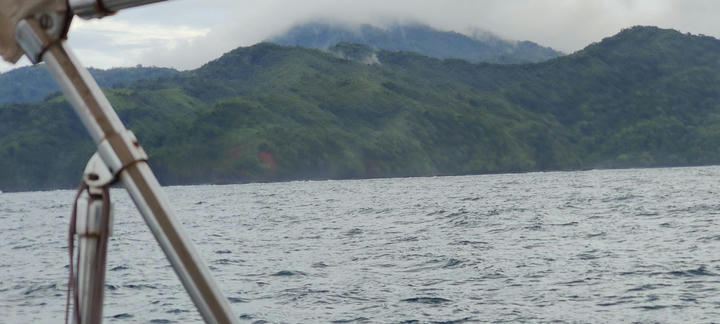
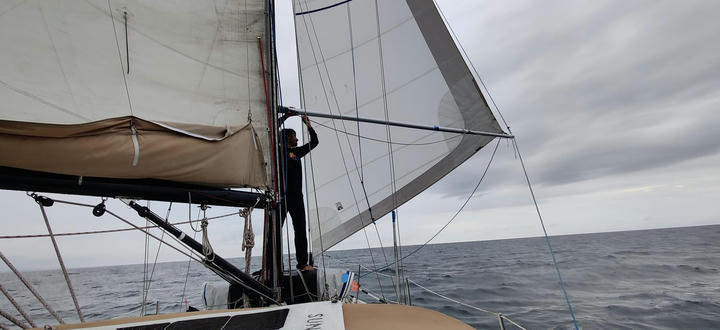
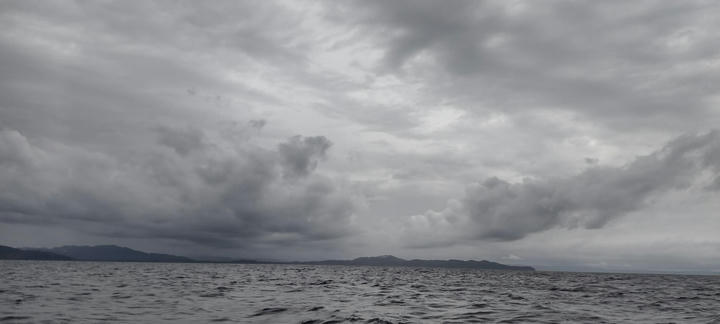
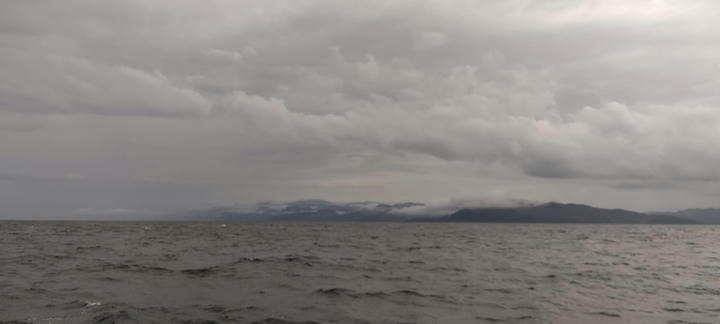
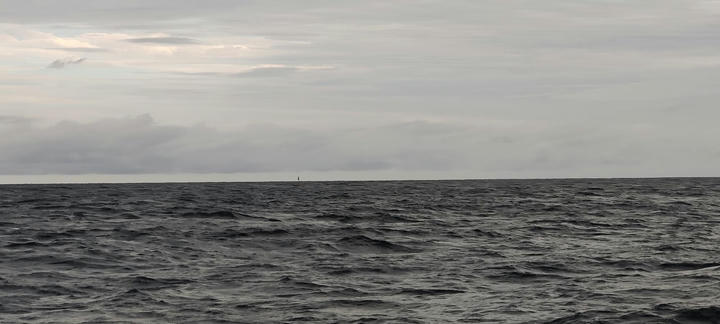
Downwind sailing is a special point of sail, and I may argue, one of the best. It requires a little bit of effort as if you don't take action, the main sail, which is all the way opened, will cut the wind for the jib which will flap and not provide any power. So, if you are going dead downwind (exactly aligned with the direction of the wind), you can sail with the jib on the opposite side of the main sail, with sails opened like a butterfly. This is a fast but unstable course, especially if you leave the steering the wind vane: If the course deviate only a little bit, the jib could collapse if the wind catches it on the other side or, worse, the main sail could also catch the wind on the other side and be violently slammed on the other side of the boat in what we call an accidental gybe. If this happens with too much force, it can mean breakage of equipment. To prevent these undesired outcomes, you "prevent the main" and "pole the jib out", holding the main in position no matter what and using a pole to push the jib open as much possible, which allows more wiggle room in the course direction. But you get it, to sail efficiently on a downwind course, there's bit of work on deck to set everything right, before you can enjoy the fast speeds and nice following seas. We hadn't had such conditions in a long time. We remember most of our "downwind cruising" from the Baja California Pacific coast back in March, where it was a heaven of 15 to 20 knots, invariably from our back and we could count on a speed of minimum 5 knots on every multi-day passage. We enjoyed similar conditions here. Yalçın went for a rest - the boat is also mostly flat on that course which is pleasant for sleeping - and we played Hanabi, a card game, in the cockpit when he came back. A first that wouldn't happen if we didn't have absolutely any seasickness, an unusual perk!
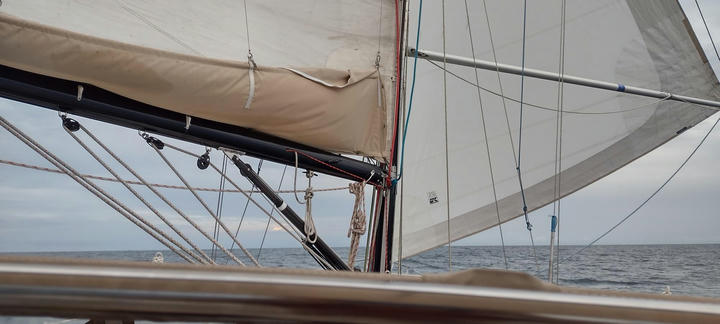
We kept taking shifts after. I went down at around 7PM and took over from Yalçın at 10. Some dark clouds were up, but nothing was too low nor too close. The full moon was up giving us some welcomed light in between the sail. We were still making good progress and rounding Punta Mala, heading more North now. Sadly that meant the end of downwind sailing and with the strong current around the point, not a lot of progress at all. I adjusted the course closer and closer to the wind, but even though we were making good progress under sail with respect to the water, the water was moving against us, so overall, we weren't moving much. I eventually turned on the engine to head the dying wind, and we switched with Yalçın woken up by the sound. He hand-steered for almost the three-hours of his shift and when turned it off to sail, that's what woke me up. We switched again. We had started to point to our next destination, the Island of Bona to the North East. This course was taking us directly into a low dark cloud with some rain, quite unappealing for a shift start. I therefore decided to tack away, which would also allow us to point more directly at our destination when I'd tack back. The wind was now from the North as prevails in the Golf of Panama and our destination was as close to the wind as can be, a way less pleasant course than downwind as you are less fast, the boat is heeled over and there is a lot of apparent wind. We discovered a little bird who had taken shelter under our dodger to sleep for the night, he even scared Yalçın by landing on the wheel as he was steering. Our tacking angle wasn't great with the current but if I hand-steered instead of Avocet, we were still making a little Northward progress. When I tacked back, the cloud had mostly dissipated, the sun was rising under the still thick sky and we were pointing directly at our destination.
To be continued...
